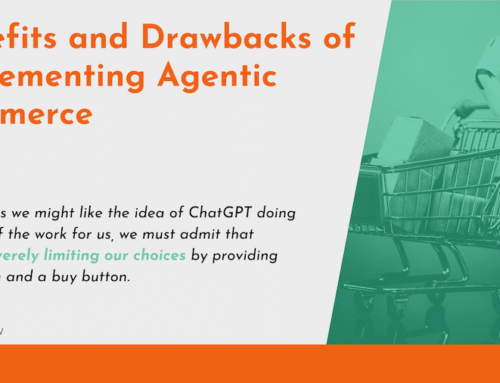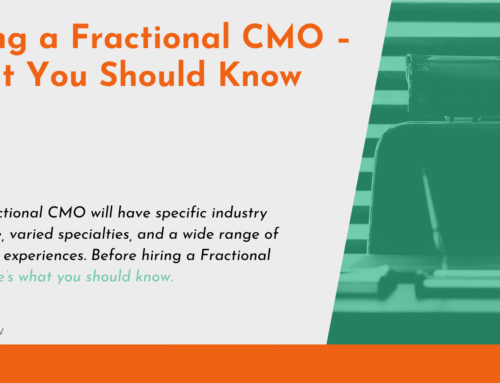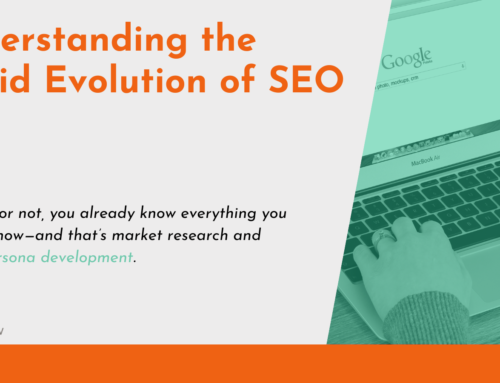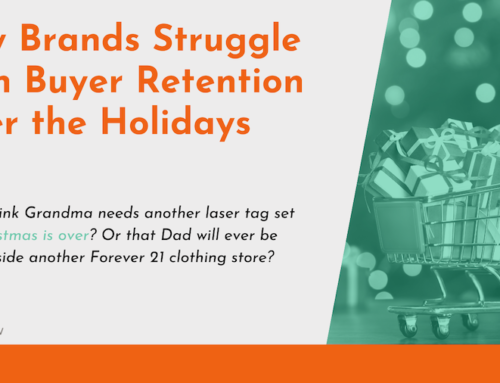
As we’ve mentioned a few times, both here on the blog and in our social media posts, the end of the third-party cookie is nigh. Now, there’s probably a part of you, even if you’re in marketing, that says “good riddance!” Yes, the third-party cookie has gotten some heat over the years as privacy concerns began to overtake the excitement of innovation and automation. If you’re in marketing, you’re also probably wondering what’s next. How can we continue to target and personalize experiences without the data that third-party cookies provide?
It’s not actually as big a conundrum as you might think. You do have options.
Getting More Personal
The biggest benefit third-party cookies offered to marketers was the ability to better personalize marketing content and offers. By discreetly tracking consumers’ movements on the internet—learning which websites they visited, which ads they clicked, which products they purchased—cookies result in lots of data that can be segmented according to demographics and psychographics. Those segmented lists, though essentially anonymous—as in, no single marketer could take a look at the data and see that John Q. Normal recently bought a pair of Nike shoes—gave marketers the opportunity to present similar products or services through targeted ads.
Personalized? Sort of. We’ll call it “relevant.” And relevance is important to consumers, but not at the expense of their privacy.
First-Party Data
We’ve mentioned first-party data and how this type of data will soon replace the third-party information gathered by cookies. First-party data is information that buyers give you because you asked for it and they were willing to part with it.
There are several ways to gather first-party data, and there’s a very good chance you’re already engaging in some of these tactics. If you employ a newsletter sign-up form on your website, you’re engaging in first-party data collection. In many cases, this is an agreement between your company and the consumer that you will use their email address to deliver educational information to their inbox.
You may also have special offers on your website. Whether these offers are discounts on physical products or a downloadable file of information not found elsewhere on your website, the information you gather for those offers is generally understood to apply only to the product or document the consumer wanted.
Let’s step outside your website for just a moment. Are there other ways to collect first-party data? Absolutely. Your social media platforms provide a wealth of information about your followers. On Facebook, LinkedIn, and Instagram, you have built-in demographic—and often psychographic—identifiers that help you segment your marketing efforts and ads.
Now, let’s take a moment to acknowledge again that the information you may have already gathered from your website and social media accounts was likely in return for one specific action, product, or download. This is important to keep in mind, because contacting your audience for offers outside of those already agreed upon could result in spam notifications. At the very least, it could harm the trust your buyers have in your brand.
Before the full retirement of third-party cookies, examine the language on any forms on your website to ensure that you include the possibility of contacting them for additional offers or information. For instance, if you have a newsletter subscription form, include wording that indicates additional material may also be delivered. For instance:
“Sign up to receive our newsletter and other educational information and offers.”
With first-party data, you can be sure that the person you reach out to with your offers has expressed interest in your brand, and that’s a big step toward convincing them to convert into buyers.
Zero-Party Data
Now, as valuable as first-party data is, the real gems come from zero-party data. If this is a new term for you, you’re not alone. Zero-party data is information gleaned from each specific customer, all with the intention of learning as much as you possibly can about them.
The most common tactic for gathering zero-party data is a form on your website. “But we already talked about forms,” you might say. And yes, simple forms on your site to gather an email address and a name—that’s first-party data. When you use those forms to obtain deeper information about your audience, that’s when you start to get the big payoff.
For instance, if you already have an email address and a name, the next form that contact encounters might ask for a company name, a job title, or even a phone number. Be careful with the phone number field, though, because requiring a phone number can reduce a form’s conversion rate by 5%.
Other zero-party data can be gathered manually. Every time you have an interaction with a lead, prospect, or customer, you should take notes. Enter that information into your CRM so that you can later use that data for personalized offers. For instance, did someone call to ask if you offer that t-shirt in blue? Make a note! When you do offer that t-shirt in blue—or any apparel in blue, for that matter—you can reach out with that information.
That is truly personalized marketing.
And the best part about these data-gathering tactics is that the user provides the information themselves. You don’t need third-party cookies to go skulking around their internet use so that you can surprise them with a creepy ad for something they never specifically told you they wanted.
If you want to learn more about the ways we can help you gather zero-party and first-party data, reach out. We’re excited to help your marketing strategy evolve.





